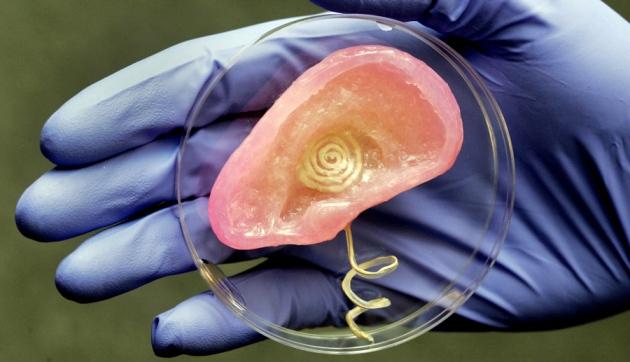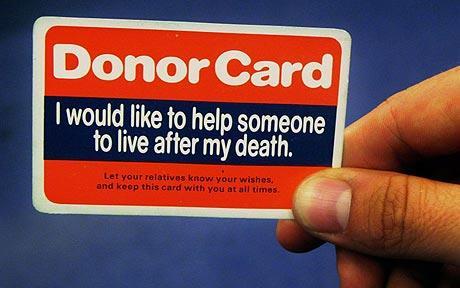Nothing is ever as simple as it seems. With over 100,000 people on waiting lists at any given time for organ transplants in the United States alone, the possibility that organs will be able to be 3D printed seems heaven sent. We’ve seen the dramatic contributions 3D printing has made to other areas of medicine and to someone waiting for a life saving transplant procedure, the only question is simple and straightforward: ‘how quickly can we perfect this?’
 Assuming that something as complex as printing human organs might actually be within the realm of possibilities, however, doesn’t mean that there aren’t external roadblocks. One of those comes in the form of patent laws. Yes, you read that right.
Assuming that something as complex as printing human organs might actually be within the realm of possibilities, however, doesn’t mean that there aren’t external roadblocks. One of those comes in the form of patent laws. Yes, you read that right.
The key here is that the development of the processes and technology that will be required to execute such a complex task requires a great deal of capital investment. A lot of money needs to be poured into the research and there is no guarantee of success. This means that if Company X invests hundreds of millions of dollars in technology development, they will want to have exclusive rights to sell that technology, something that is guaranteed by a patent. Patents in the case of medicine are not new–pharmaceutical companies use them to protect their own research and development investments–instead it is the nature of the patent that is so unusual.
 When printing human organs, however, you enter into a new and rarely before explored area of patent law will require a great deal of trial and error refinement. Current patent law states that “no patent may issue on a claim directed to or encompassing a human organism.” This language in the patent law was introduced in 2011 and so you might be tempted to think that it must be all cleared up and spelled out in great detail. Unfortunately that isn’t the case. In fact, there isn’t even any definition of what constitutes a ‘human organism’ something that could range from a single cell to any one of us.
When printing human organs, however, you enter into a new and rarely before explored area of patent law will require a great deal of trial and error refinement. Current patent law states that “no patent may issue on a claim directed to or encompassing a human organism.” This language in the patent law was introduced in 2011 and so you might be tempted to think that it must be all cleared up and spelled out in great detail. Unfortunately that isn’t the case. In fact, there isn’t even any definition of what constitutes a ‘human organism’ something that could range from a single cell to any one of us.
Having such lack of precision in the statue will cause patent lawyers to have to tell their clients that they simply cannot determine whether or not the advances they make in the 3D printing of human organs will be something that they will be able to patent. The ambiguity in the code will require a number of decisions on the parts of the courts in order to clarify. That is a process that will take no small amount of time. Instead, it will undoubtedly slow down both the access to funding for this research, as investors face an even more uncertain future for returns, and the implementation of the technologies themselves as their status gets tied up in lengthy legal maneuvers.
 Where there is a will, there is a way though and given unquenchable human curiosity and the ever larger number of minds that can come together and work on projects such as this, if it is possible to 3D print human organs, it will one day be done. As to whether or not the technology and procedures that make it a reality are something that can be patented, that’s something that the courts will have to decide. Given the commitment to open source design that is so heavily ingrained in 3D printing culture, combined with the nature of the Public Good to be done by providing increased access to life saving transplants, the more interesting question to ask may regard whether or not patents should be allowed to play any role at all.
Where there is a will, there is a way though and given unquenchable human curiosity and the ever larger number of minds that can come together and work on projects such as this, if it is possible to 3D print human organs, it will one day be done. As to whether or not the technology and procedures that make it a reality are something that can be patented, that’s something that the courts will have to decide. Given the commitment to open source design that is so heavily ingrained in 3D printing culture, combined with the nature of the Public Good to be done by providing increased access to life saving transplants, the more interesting question to ask may regard whether or not patents should be allowed to play any role at all.
In the meantime, consider signing up to be an organ donor, you don’t have to wait for patent law in order to be ready to be a hero.
What are your thoughts on the patenting of 3D printed human organs? Discuss in the 3D Printing Humans forum thread on 3DPB.com.
Subscribe to Our Email Newsletter
Stay up-to-date on all the latest news from the 3D printing industry and receive information and offers from third party vendors.
You May Also Like
3D Printing Financials: Fathom Struggles in Financial Quicksand During Critical Transition
Facing a year of key transitions and financial pressures, Fathom (Nasdaq: FTHM) has filed its annual report for 2023 with the U.S. Securities and Exchange Commission (SEC). The document outlines...
Latest Earnings Overview for Australian 3D Printing Firms Titomic and AML3D
Australian 3D printing manufacturing firms Titomic (ASX: TTT) and AML3D (ASX: AL3) reported their financial results for the period from July to December 2023, marking the first half of their...
3D Printing Webinar and Event Roundup: April 7, 2024
Webinars and events in the 3D printing industry are picking back up this week! Sea-Air-Space is coming to Maryland, and SAE International is sponsoring a 3D Systems webinar about 3D...
3D Printing Financials: Unpacking Farsoon and BLT’s 2023 Performance
In the Chinese 3D printing industry, two companies, Farsoon (SHA: 688433) and Bright Laser Technologies, or BLT (SHA: 688333), have recently unveiled their full-year earnings for 2023. Farsoon reported increases...































